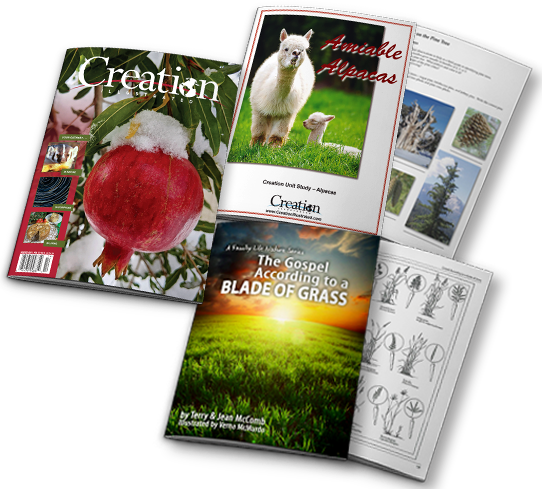Our Why – Christ’s Method of Teaching
 Even without the challenges of distance learning in these interesting times, meaningful education can be elusive as school boards, parents, and teachers toil with contemporary classroom dynamics. Even homeschoolers face similar challenges to know what works best. Historian Henry Adams, a descendant of the Adams political family, once wrote in the early 1900s, “They know enough who know how to learn.”
Even without the challenges of distance learning in these interesting times, meaningful education can be elusive as school boards, parents, and teachers toil with contemporary classroom dynamics. Even homeschoolers face similar challenges to know what works best. Historian Henry Adams, a descendant of the Adams political family, once wrote in the early 1900s, “They know enough who know how to learn.”
So, how should we educate in order to inspire learning?
A main thrust of our purpose in publishing Creation Illustrated is to use Christ’s method of teaching through the things He made. Computers, books, and even classrooms were not an option in biblical times, so the Savior chose His Creation to impart vital eternal truths to the masses. In fact, from the very beginning the human race was created to work with creation—both flora and fauna in the garden—to benefit all in a mutual, synergistic model of cooperation and growth in their Eden home.
For our benefit Matthew 13:34 tells us how Jesus taught. “All these things Jesus spoke to the multitude in parables; and without a parable He did not speak to them.” Nearly two millennia later agricultural scientist and inventor George Washington Carver concurred as he wrote, “I love to think of nature as an unlimited broadcasting station, through which God speaks to us every hour, if we will only tune in.” Using nature and teaching in parables from a biblical worldview is still a powerful way to reach students and inspire life-long learning.
 Some teachers comment: “I just wanted to express my appreciation as a teacher of younger children. I am constantly looking for books and teaching materials that teach from a Creation point of view. Many children’s books are sadly lacking when it comes to sharing a Creation. Instead the children are bombarded with this happened “millions of years” ago. This causes children to be confused, even though I teach about creation every year. So thank you for providing an excellent resource even for lower elementary teachers. Today more than ever kids need to know the truth about Creation,” says an elementary school teacher in Burlington, Washington.
Some teachers comment: “I just wanted to express my appreciation as a teacher of younger children. I am constantly looking for books and teaching materials that teach from a Creation point of view. Many children’s books are sadly lacking when it comes to sharing a Creation. Instead the children are bombarded with this happened “millions of years” ago. This causes children to be confused, even though I teach about creation every year. So thank you for providing an excellent resource even for lower elementary teachers. Today more than ever kids need to know the truth about Creation,” says an elementary school teacher in Burlington, Washington.
“I have been teaching for 10 years, and I’m not sure when we first received the Creation Illustrated magazine, but from the moment we got them I’ve loved them. In my classroom’s Science Center, my students use the magazines to discuss with others different animals, plants, flowers, and habitats. The students use the pictures to find God’s majesty throughout the entire magazine. We use this magazine for EVERYTHING!” add a teacher in Memphis, Tennessee.
This type of educational structure fosters spiritual, physical, mental, social, emotional, and scholastic development that teaches Christ-esteem—that each individual is of eternal worth—rather than self-esteem, which is never good enough in a survival of the fittest society. Scripture is clear. “Let each esteem other better than themselves” (Philippians 2:3, KJV). Once again Carver echoes the importance of such development in students. “Education, in the broadest of truest sense, will make an individual seek to help all people, regardless of race, regardless of color, regardless of condition.”
 Such vital, non-worldly character traits we believe have eternal consequences. So, even when it is not feasible to go outdoors into the Creator’s classroom, each story in Creation Illustrated provides consequential character development and spiritual lessons found in nature and backed by Scripture, scientific facts, and personal testimony. In addition to this type of life-transforming education, research reveals that regular exposure to nature (even photos of nature) for twenty minutes a day can improve memory retention by 20 percent.
Such vital, non-worldly character traits we believe have eternal consequences. So, even when it is not feasible to go outdoors into the Creator’s classroom, each story in Creation Illustrated provides consequential character development and spiritual lessons found in nature and backed by Scripture, scientific facts, and personal testimony. In addition to this type of life-transforming education, research reveals that regular exposure to nature (even photos of nature) for twenty minutes a day can improve memory retention by 20 percent.
We uphold that every student, young and old, can benefit from such benevolent blessings along with a transformed character from the hand of the Creator! That’s why.



